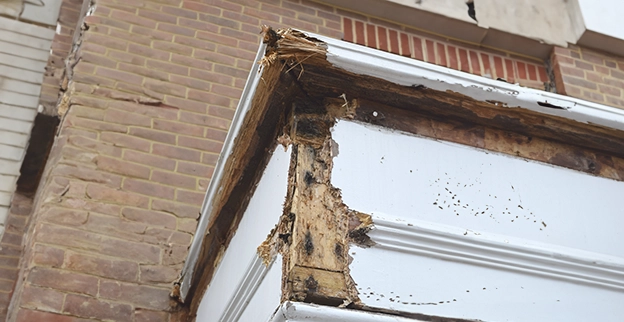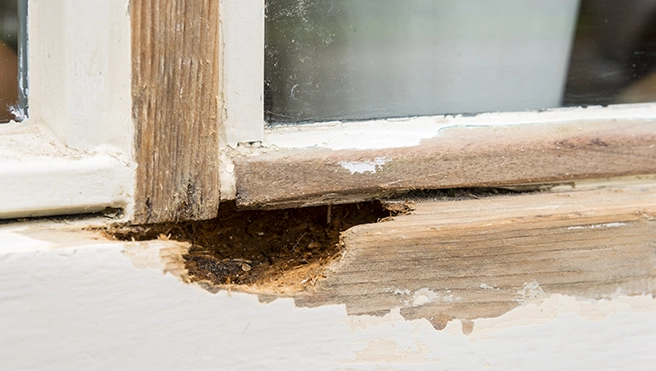The approach to wood rot treatment will be determined by the extent of the damage and the amount of moisture present. Firstly, it's important to identify and repair the source of the moisture to prevent further or continued decay. What this can involve is fixing a leaking roof, improving ventilation, or correcting the grading around your home's foundation.
Once the source of the moisture has been identified and the problem solved, then the remaining damage and rot can be treated and repaired.
There are different treatment options available for treating wood rot, including fungicides, borates, and epoxy consolidates. Fungicides are chemicals that kill the fungi that cause wood to decay, while borates penetrate the fibers, preventing further or future decay. Epoxy wood fillers are then used to strengthen and stabilize the wood by filling in the voids left behind by decay.
When it comes to repairing wood rot damage, the extent of damage itself will determine the appropriate repair approach. Small areas of rot, for instance, can be removed and replaced with a wood patch or filler, while larger areas may require partial or complete replacement. In certain cases, it might even be necessary to reinforce the affected areas with additional framing or metal brackets.
There are also several different kinds of wood rot. Each of these types comes with its own unique characteristics and treatment options.
Here are the three most common types of wood rot, along with how our team will repair and treat them:
Brown/Dry Wood Rot
Brown or dry wood rot is caused by a dry rot fungus that breaks down the cellulose and hemicellulose in wood. It leaves behind a dry, crumbly material. Brown rot typically affects hardwoods and is far more prevalent in areas that have high humidity or experience a lot of water exposure.
Treatment of brown rot typically involves removing and replacing the affected wood with new, treated lumber to help prevent future decay.
White Rot
White rot is caused by a fungal growth that breaks down both the cellulose and lignin cell structure, which results in a whitish appearance. White rot usually affects soft woods, occurring in areas that are damp or when there's excessive moisture.
Treatment for white rot typically involves using a fungicide to kill off the fungi or mold first. Then, the mold damage is repaired by replacing the affected wood.
Soft Rot
Soft rot is caused by bacteria. These bacteria break down cellulose and hemicellulose in wood, which results in a soft, spongy texture. Soft rot is usually caused by high or excessive moisture, the perfect breeding ground for mold.
Treating soft rot usually involves removing and replacing the affected, now rotted, materials with new treated timber. It can also involve using a preservative to remove mold, which also prevents future decay.






